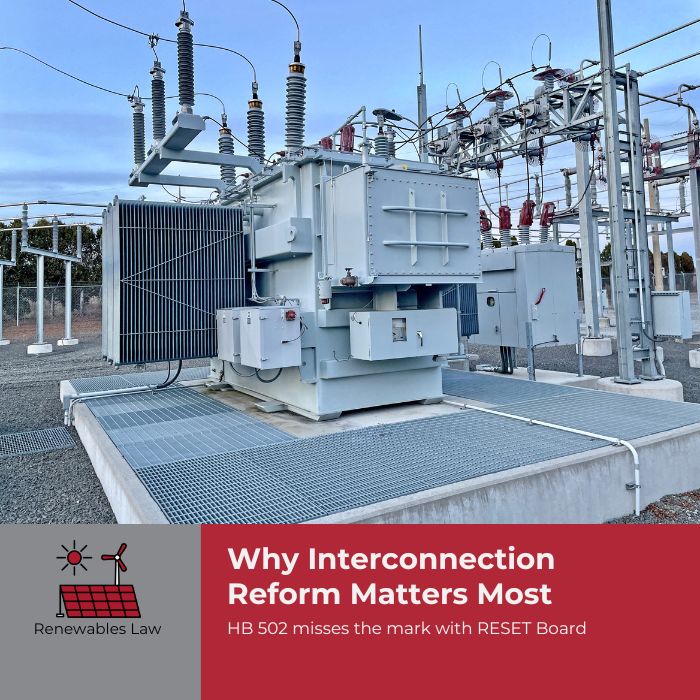The Real Barrier to Reliable Energy in Pennsylvania: Interconnection, Not Land Use
Written by Andrew Miller

The Pennsylvania House of Representatives is currently considering HB 502 which would establish the Reliable Energy Siting and Electric Transition (RESET) Board. The Board would for the first time give Pennsylvania a cohesive central authority able to consider and approve applications for large reliable energy generating facilities. HB 502 is sponsored by all democrats making it unlikely to be enacted in Pennsylvania’s fractured political environment. The legislation also has some flaws that should be pointed out.
First, the legislation only applies to “reliable energy generating facilities” which are defined as facilities with nameplate capacity over 25 MW. While we can all debate what “reliable” means and why that even relates to any capacity reference, the legislation fails to pickup smaller facilities participating in the PaPUC’s net metering program. A strong argument can be made that these smaller facilities are the “reliability” model because they greatly diversify the generation supply of our grid. A diversified grid will be more robust and benefit us all in the long run.
The legislation also fails to address the biggest hurdle to a reliable and sustainable energy infrastructure – the interconnection process. Navigating land use in Pennsylvania is tough and we often describe it as the “wild west” because land use decisions are so localized and therefore much less formal and organized than most states. However, it has not held back new energy sources from coming online. While large, highly impactful projects like coal or gas-fired plants or thousand plus-acre solar or wind farms are very difficult to obtain entitlements for in Pennsylvania, the more moderate, smaller scale projects generally are not. There is certainly some strategy, planning and cost to doing so, but MPL Law Firm’s land use attorneys have been successful obtaining entitles on more than 50 net metering scale projects across the state over the past few years.
We have found from our extensive experience with utility-scale and net metering scale projects that the biggest hurdle and the obvious bottleneck to progress on development of our energy infrastructure and electricity market is the interconnection process. While we have obtained entitlements to a large amount of megawatt capacity, much of it remains bogged down in the PJM interconnection queue on the utility-scale side and the local utility interconnection queue on the net metering side. The main problem with interconnection is the lack of any time limitations on the review and approval process. This disincentivizes utilities from hiring the staff they need to manage their interconnection queues efficiently and we all pay for this lack of accountability in less electricity to the grid and higher electric prices. The land use entitlements process, while challenging, has numerous limitations periods applied to the review process through the Pennsylvania Municipalities Planning Code. Simply applying some similar time limits on the interconnection process will work. We do not have to create new bureaucracy or reinvent the wheel.
I always feel at my most helpless as a lawyer when I am asked by a client how I can help address this problem. My only response is that they have no rules we can apply. They have no accountability to our clients or their customers when it comes to efficiently bringing reliable energy onto the grid. My suggestion to the legislature is to fix the this bottleneck first with the simple change of putting time limits on the interconnection process and then see if anything else even needs to be adjusted. I predict capacity will come online at a more than adequate pace without the need to radically change our land use system.


